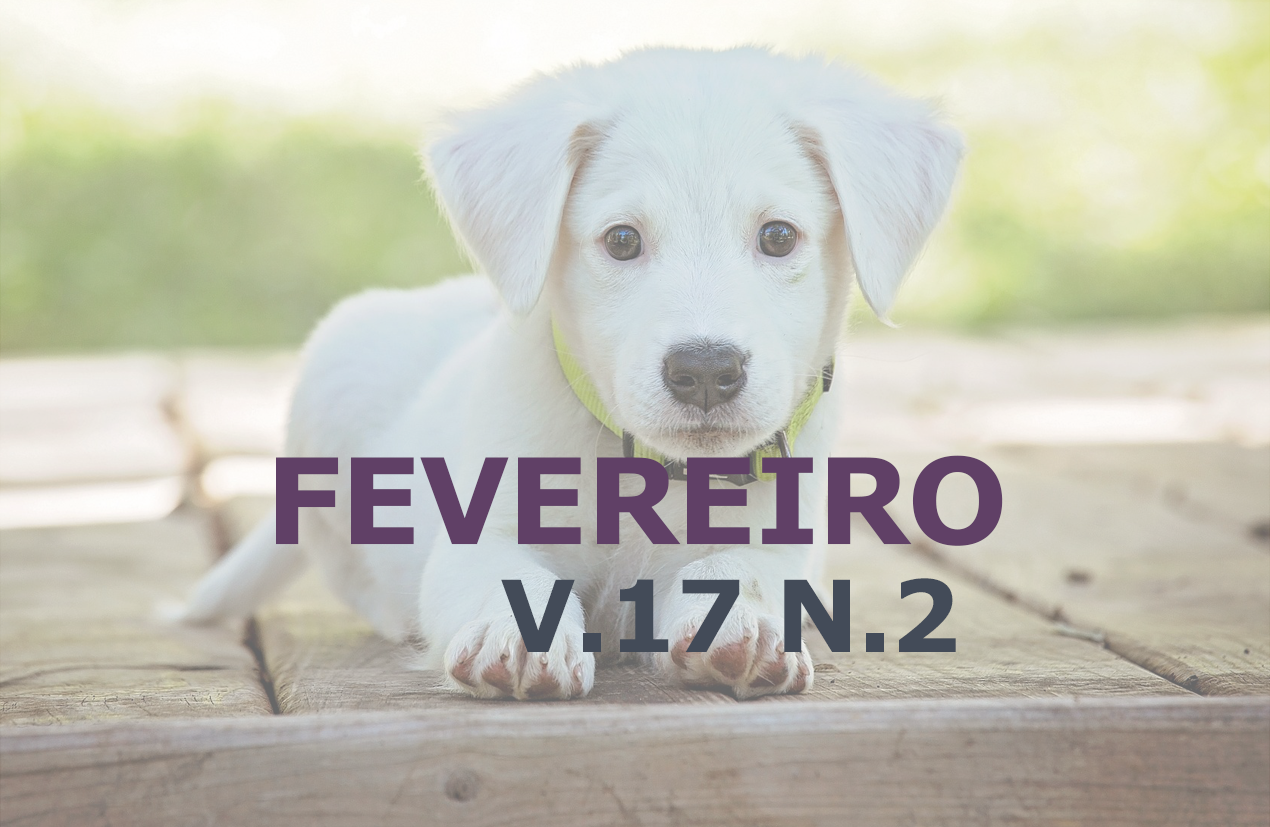Urolithiasis in a Pug dog: Case report
DOI:
https://doi.org/10.31533/pubvet.v17n02a1341Keywords:
Dog, cystotomy, Pug, urinary bl1adder, urolith, urolithiasisAbstract
The objective of this study was to present a case of urolithiasis in a nine-year and eleven-month-old Pug, weighing nine kilos, with a history of urolithiasis. Upon physical examination, the animal presented apathy and abdominal pain on palpation. Upon ultrasound examination, it was not possible to identify the presence of uroliths in the urinary tract. The animal underwent surgical treatment, with cystotomy being the most suitable for this type of case. A cystotomy is an incision in the urinary bladder to remove uroliths, which can be made up of various minerals and of varying sizes. In the postoperative period, a diet change was indicated to reduce the chances of recurrences, since an inadequate diet is one of the factors for the formation of uroliths when there is certain predisposition.
References
Ariza, P., Queiroz, L., Castro, L. T., Dall’Agnol, M., & Fioravanti, M. C. (2016). Tratamento da urolitíase em cães e gatos: abordagens não cirúrgicas. Enciclopédia Biosfera, 13(23).
Caporali, E. H. G., Phillips, H., Underwood, L., & Selmic, L. E. (2015). Risk factors for urolithiasis in dogs with congenital extrahepatic portosystemic shunts: 95 cases (1999–2013). Journal of the American Veterinary Medical Association, 246(5), 530–536. https://doi.org/10.2460/javma.246.5.530.
Carciofi, A. C. (2008). Manejo nutricional do cão e do gato hospitalizado. In UNESP (Ed.), Apontamentos teóricos das disciplinas de Clínica das Doenças Carenciais, Endócrinas e Metabólicas e de Nutrição e Alimentação de Cães e Gatos. Universsidade de São Paulo.
Cinti, F., Pisani, G., Carusi, U., & Buracco, P. (2015). Urethrotomy of the glans penis in three male dogs with urolithiasis. Journal of Small Animal Practice, 56(11), 671–674.
Izidoro, L. R. V, Araújo, R. B., Pinheiro, E. C., Schwinden, G. M., & Landim, T. (2018). Tratamento fitoterápico de urolitíase com cranberry em um porquinho-da-Índia. Ciência Animal, 28, 75–78.
Jericó, M. M., Kogika, M. M., & Andrade Neto, J. P. (2015). Tratado de medicina interna de cães e gatos. Guanabara Koogan.
Kopecny, L., Palm, C. A., Segev, G., & Westropp, J. L. (2021). Urolithiasis in dogs: Evaluation of trends in urolith composition and risk factors (2006‐2018). Journal of Veterinary Internal Medicine, 35(3), 1406–1415. https://doi.org/10.1111/jvim.16114.
Lazzarotto, J. J. (2000). Doença do trato urinário inferior dos felinos associada aos cristais de estruvita. Revista Da FZVA, 7(1), 58–64.
Martins, A. G. C., & Oliveira, M. K. R. (2021). Urolitíase em cães: Relato de caso.
Muniz Neta, E. S., & Munhoz, A. D. (2008). Urolitíase em cães e gatos: uma revisão. MEDVEP. Revista Científica de Medicina Veterinária, 6(17), 24–34.
Okafor, C. C., Lefebvre, S. L., Pearl, D. L., Yang, M., Wang, M., Blois, S. L., Lund, E. M., & Dewey, C. E. (2014). Risk factors associated with calcium oxalate urolithiasis in dogs evaluated at general care veterinary hospitals in the United States. Preventive Veterinary Medicine, 115(3–4), 217–228.
Oliveira, J. V., Almeida, M. D. S., Cavalcante, L. C., Peixoto, T. K. F., Almeidas, B. V., & Leite, A. K. R. M. (2018). Alterações clínicas e laboratoriais em uma cedala com urolitíase: relato de caso. Revista Científica de Medicina e Veterinária, 30.
Osborne, C. A., Lulich, J. P., Bartges, J. W., Unger, L. K., Thumchai, R., Koehler, L. A., Bird, K. A., & Felice, L. J. (1995). Canine and feline urolithiasis: relationship of etiopathogenesis to treatment and prevention. Canine and Feline Nephrology and Urology, 37(12), 798–888.
Pimenta, Y. T. S., Segala, R. D., Pita, M. C. G., Salzedas, B. A., Lopes, D. M., Santos, S. O., & Cangussu, R. B. (2019). Urolitíase em Porquinho-da-Índia (Cavia porcellus): Relato de caso. PUBVET, 13, 1–9. https://doi.org/10.31533/pubvet.v13n3a286.1-9.
Rick, G. W., Conrad, M. L. H., Vargas, R. M., Machado, R. Z., Lang, P. C., Serafini, G. M. C., & Bones, V. C. (2017). Urolitíase em cães e gatos. PUBVET, 11, 646–743.
Silva Filho, E., Prado, T., Ribeiro, R., & Fortes, R. (2013). Urolitíase canina. Enciclopédia Biosfera, 9(17), 2517–2536.
Silva, S. O. S., Sousa, F. B., Rodrigues, M. C., Araújo, B. M., Sousa, D. K. T., Matos, R. M. L., Farias, N. L., Melo, K. M. S., & Santos, S. I. P. (2018). Síndrome urêmica e coágulo na vesícula urinaria na presença de obstrução urinária em felino: Relato de caso. PUBVET, 12(7), 1–5. https://doi.org/10.31533/pubvet.v12n7a131.1-5
Downloads
Published
Issue
Section
License
Copyright (c) 2023 Thaynan Cardoso Tavares, Nárgila Dadalt Teixeira, Ivam Moreira de Oliveira Junior

This work is licensed under a Creative Commons Attribution 4.0 International License.
Você tem o direito de:
Compartilhar — copiar e redistribuir o material em qualquer suporte ou formato
Adaptar — remixar, transformar, e criar a partir do material para qualquer fim, mesmo que comercial.
O licenciante não pode revogar estes direitos desde que você respeite os termos da licença. De acordo com os termos seguintes:
Atribuição
— Você deve dar o crédito apropriado, prover um link para a licença e indicar se mudanças foram feitas. Você deve fazê-lo em qualquer circunstância razoável, mas de nenhuma maneira que sugira que o licenciante apoia você ou o seu uso. Sem restrições adicionais
— Você não pode aplicar termos jurídicos ou medidas de caráter tecnológico que restrinjam legalmente outros de fazerem algo que a licença permita.





